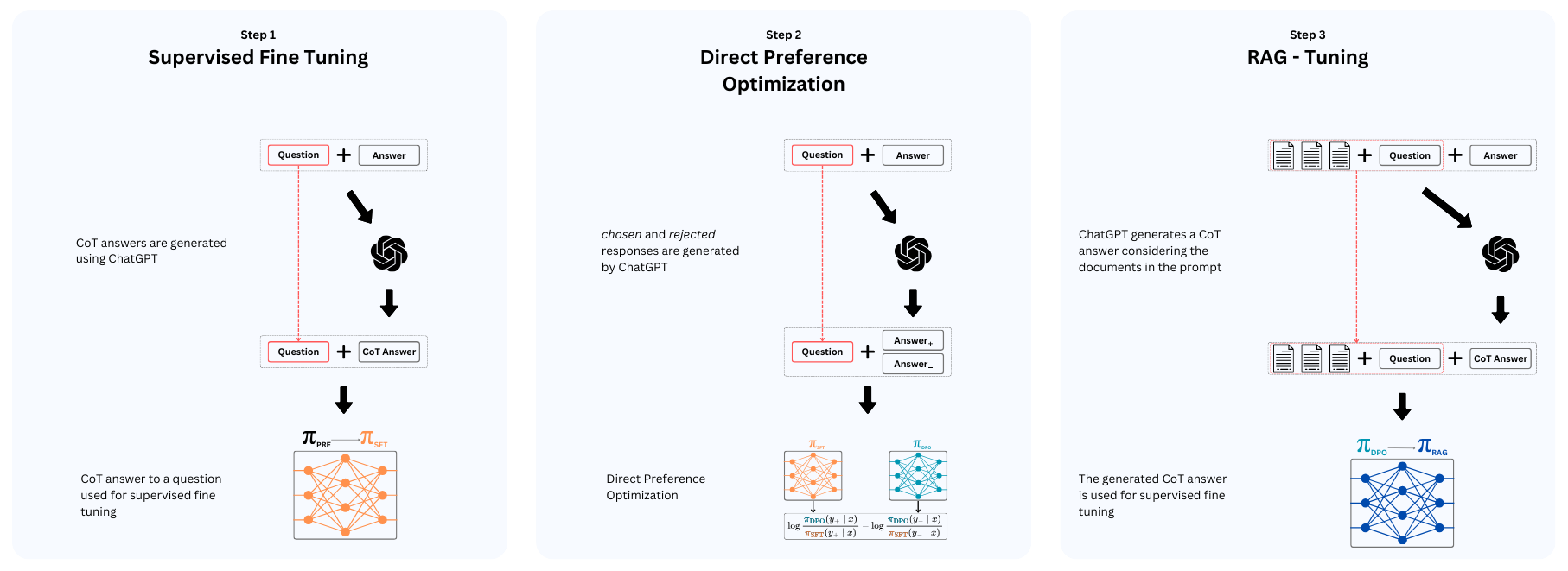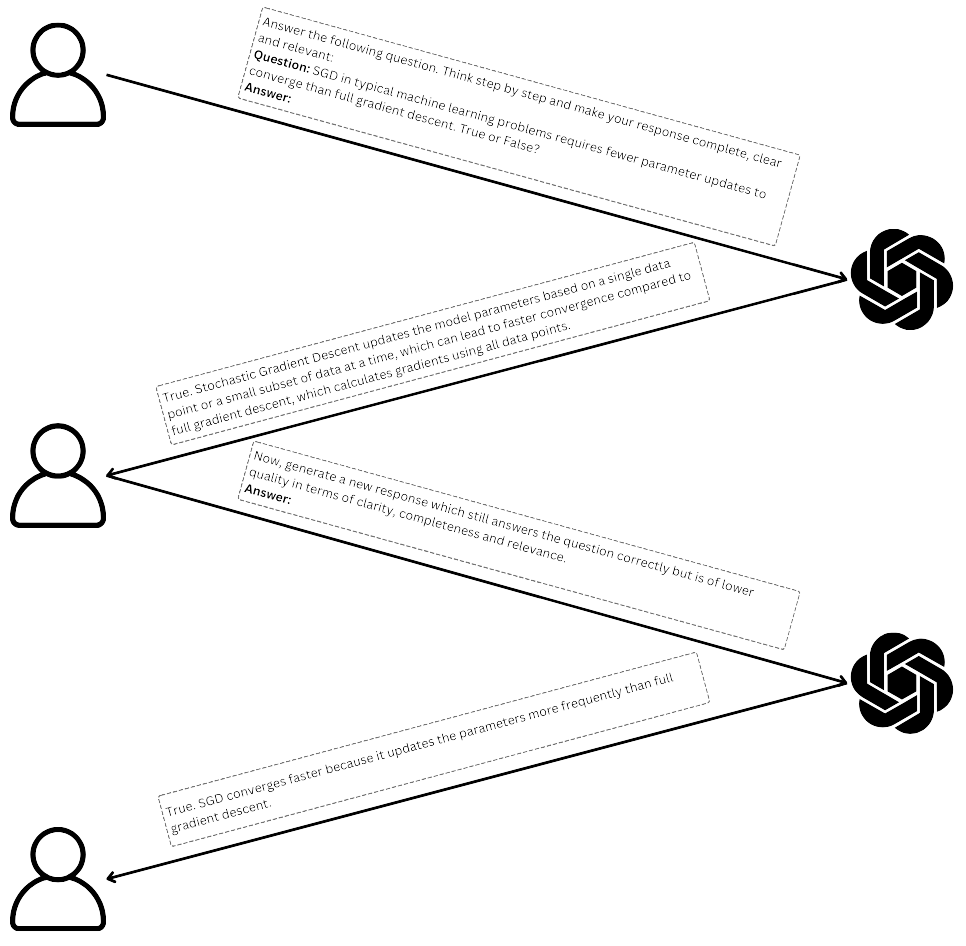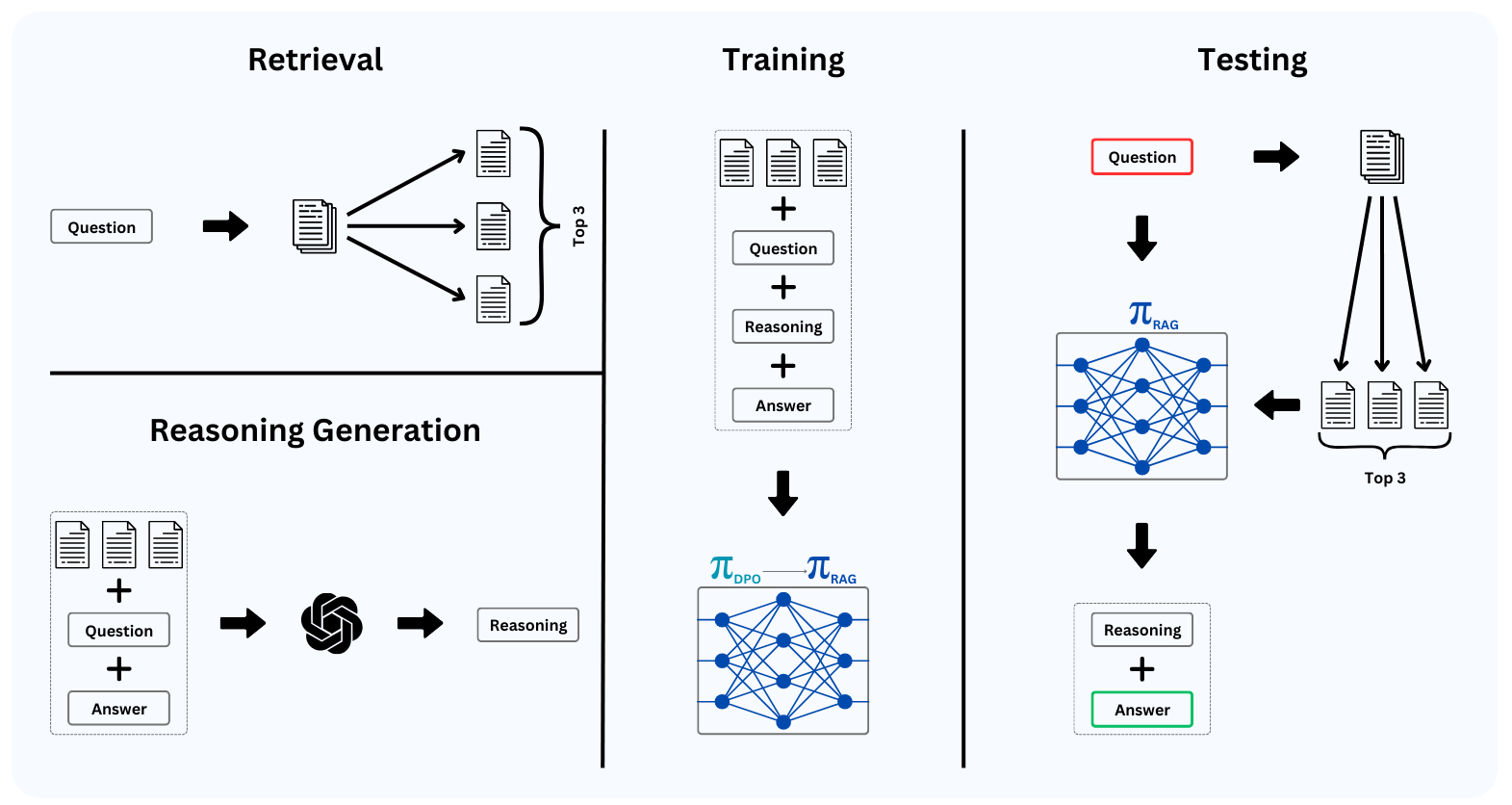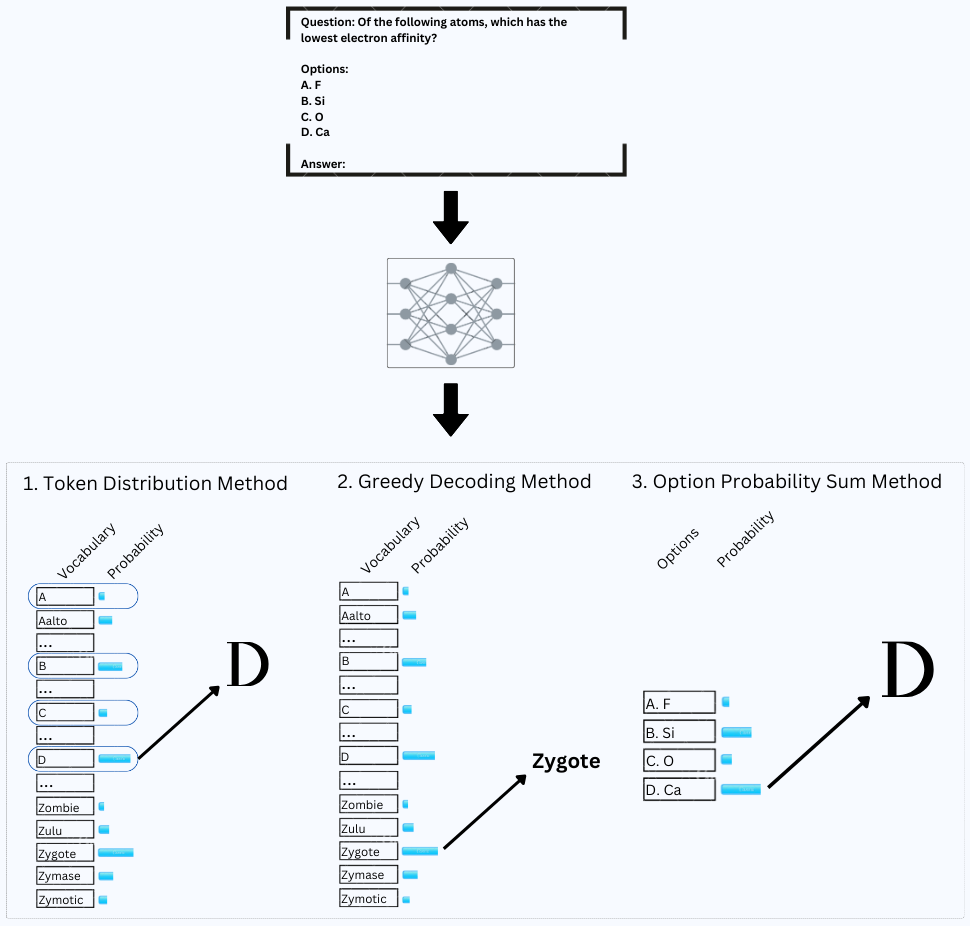GalactiTA
1.3B LLM trained through a 3-stage pipeline of SFT, DPO, and RAG-tuning on scientific datasets.
Large Language Models have transformed education, but they often struggle with technical domains and complex reasoning. This project addresses a key question: How can we adapt pre-trained LLMs for scientific multiple-choice question answering?
We developed GalactiTA, a digital teaching assistant specifically designed for STEM subjects. Starting with the Galactica-1.3B model, we applied a three-stage training pipeline: Supervised Fine-Tuning (SFT), Direct Preference Optimization (DPO$^{[1]}$), and Retrieval-Augmented Generation (RAG$^{[2]}$) tuning. The final model achieved an 11.52% improvement over the baseline on EPFL course questions, demonstrating that smaller, specialized models can effectively support students and teaching assistants with domain-specific queries.
Methodology
Our approach follows a systematic pipeline with three distinct training phases. The overall workflow is illustrated below:

Supervised Fine-Tuning (SFT)
We trained Galactica-1.3B on scientific QA datasets (ScienceQA, SciQ, ARC, Stack Exchange) totaling ~43k questions. For datasets lacking explanations, we used ChatGPT to generate Chain-of-Thought (CoT) reasoning, teaching the model to explain its answers rather than just provide them.
Direct Preference Optimization (DPO)
Rather than traditional reinforcement learning, we used DPO$^{[1]}$ to align the model with human preferences. The data collection process involved prompting ChatGPT strategically to generate high-quality responses:

We collected pairs of “good” and “bad” responses—both AI-generated from ChatGPT and human-annotated from platforms like Stack Exchange. This taught the model to distinguish between high-quality and low-quality scientific explanations.
RAG-Tuning
In the final phase, we fine-tuned the model for RAG$^{[2]}$ incorporating external knowledge. We collected 5GB of scientific documents (textbooks, papers) and created training data where the model learned to generate answers based on retrieved context:

For each question, we retrieved the top-3 relevant documents and trained the model to reason from these sources. This approach allows the model to leverage domain-specific knowledge beyond its training data.
Evaluation Methods
We designed three automatic evaluation methods to assess model performance on multiple-choice questions:

These complementary methods allow us to assess whether the model truly learned to answer multiple-choice questions correctly or is simply exploiting patterns in the data.
Results
Our experiments revealed several key findings across four test datasets (ARC, MMLU, SciQ, EPFL). The table below shows accuracy scores using Method 1 (Token Distribution):
| Model | ARC | MMLU | SciQ | EPFL |
|---|---|---|---|---|
| GalactiTA (DPO only) | 29.24% | 29.03% | 41.31% | 27.32% |
| GalactiTA (MCQA-tuned) | 35.06% | 31.61% | 60.50% | 35.59% |
| GalactiTA (MCQA + RAG) | 33.00% | 32.90% | 53.22% | 34.59% |
| GalactiTA (RAG-tuned) | 31.01% | 29.68% | 47.35% | 30.83% |
| GalactiTA (RAG + RAG) | 29.67% | 30.97% | 45.47% | 31.58% |
| TinyLlama | 24.34% | 25.16% | 24.00% | 36.84% |
| TinyLlama (+ RAG) | 25.20% | 22.58% | 25.80% | 38.60% |
MCQA-tuning was highly effective: The model learned to predict single letters accurately, with Method 1 and Method 2 scores matching perfectly after MCQA-tuning. This demonstrates that the model genuinely learned the task structure rather than exploiting shortcuts.
RAG benefits were dataset-dependent: For EPFL questions specifically, RAG-tuning with retrieval showed an 11.52% improvement over the baseline when comparing greedy decoding methods. This makes sense because our document collection was curated for EPFL-relevant topics. On datasets where retrieved documents were less relevant (like general science benchmarks), adding RAG during inference sometimes confused the model rather than helping it.
Our ablation studies revealed important insights about training dynamics:

We found that using 3-4 retrieved documents was optimal, and that training with only one epoch each for SFT and DPO produced the best results. Training longer actually degraded DPO performance, suggesting the importance of careful hyperparameter tuning in alignment tasks.
Scalability confirmed: Testing on Llama-3 8B showed our RAG-tuning approach generalizes to larger models, with the RAG-tuned version achieving 62.38% on ARC when using retrieval (vs. 33.07% without), validating our training methodology across different model scales.
References
-
Direct Preference Optimization: Rafailov, R., Sharma, A., Mitchell, E., Ermon, S., Manning, C. D., & Finn, C. (2024). Direct Preference Optimization: Your Language Model is Secretly a Reward Model. arXiv preprint arXiv:2305.18290. https://arxiv.org/abs/2305.18290
-
Retrieval-Augmented Generation: Lewis, P., Perez, E., Piktus, A., Petroni, F., Karpukhin, V., Goyal, N., Küttler, H., Lewis, M., Yih, W., Rocktäschel, T., Riedel, S., & Kiela, D. (2021). Retrieval-Augmented Generation for Knowledge-Intensive NLP Tasks. arXiv preprint arXiv:2005.11401. https://arxiv.org/abs/2005.11401